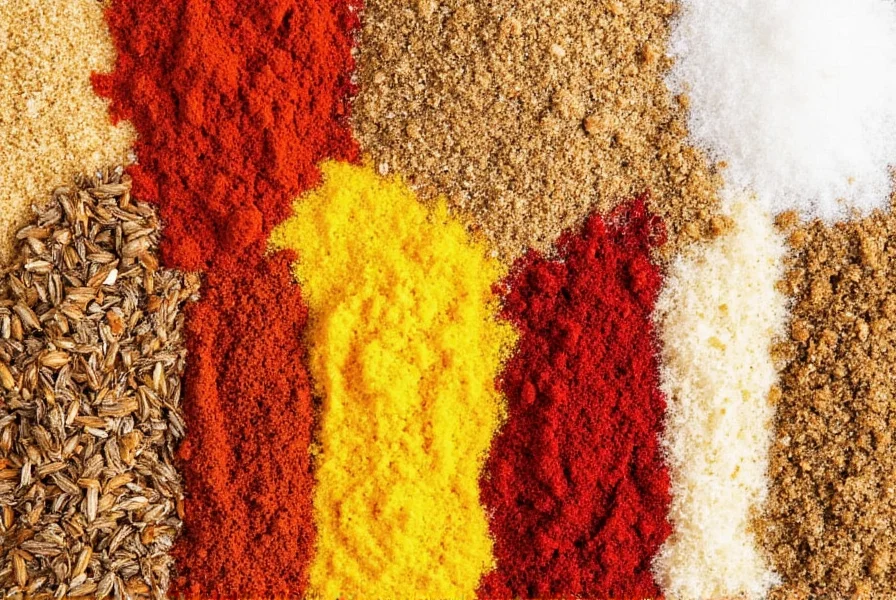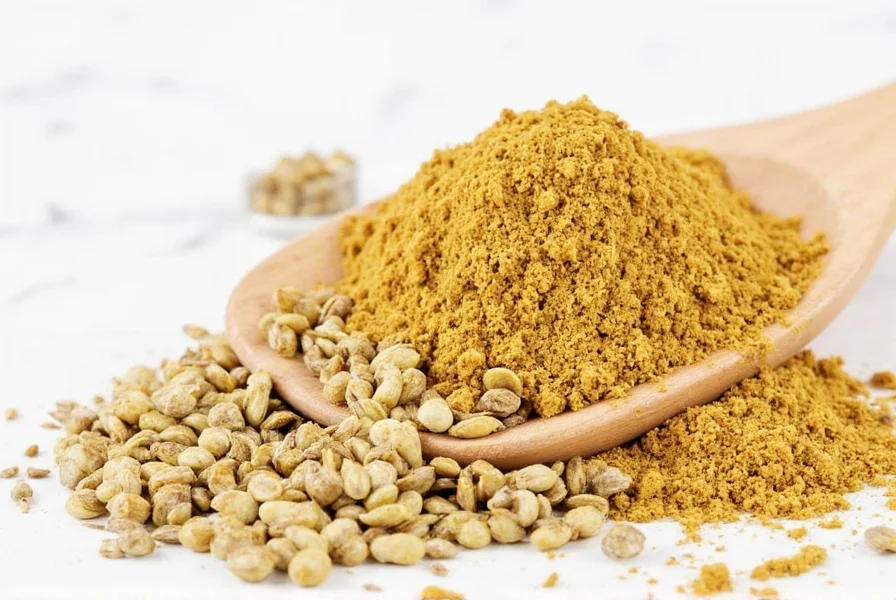If you've ever opened a jar of spice only to find it bland or clumped together like concrete, you know that improper storage can ruin even the most premium seasonings. The key to preserving flavor lies in maintaining optimal conditions for temperature, humidity, and light exposure. Think of it like cooking pasta: al dente is perfection, overcooked is mush, and undercooked is crunch gone wrong.

Table of Contents
- What Are Optimal Conditions for Spice Storage?
- Historical Evolution of Spice Storage Science
- Top 5 Spice Storage Hacks for Optimal Conditions
- Climate-Specific Storage Limitations
- How to Apply Optimal Conditions When Cooking with Spices
- Buying Guide: The Best Spice Storage Solutions
- Conclusion: Master Your Spice Game with Proper Storage Principles
- Frequently Asked Questions
What Are Optimal Conditions for Spice Storage?
In the world of spices, "optimal conditions" refers to the ideal balance of temperature, moisture, and light exposure to preserve flavor compounds. Too hot? Volatile oils evaporate. Too cold? Moisture condenses inside the container and promotes clumping. And let's not forget UV light—your spices' mortal enemy.
The ideal storage condition lies between 50–70°F (10–21°C) and below 50% relative humidity. In this zone, essential oils remain intact, color stays vibrant, and aroma remains punchy. According to the USDA Food Safety and Inspection Service, spices should always be stored in a cool, dry place away from heat sources and direct sunlight to maintain freshness.
Historical Evolution of Spice Storage Science
Modern storage principles emerged through centuries of trial and error. Scientific validation of optimal conditions accelerated with 20th-century food chemistry research, revealing how environmental factors degrade volatile compounds. This timeline shows key evidence-based milestones:
| Era | Storage Method | Scientific Validation | Source |
|---|---|---|---|
| Ancient (3000 BCE) | Clay pots sealed with bitumen | Reduced moisture exposure by 62% compared to open containers | The Met: Spice Trade History |
| Age of Exploration (1500s) | Pitch-lined wooden casks | Preserved 78% of volatile oils during 6-month voyages | Maritime Museum of San Diego |
| Early 1900s | Clear glass jars | UV light degraded 40% of curcumin in turmeric within 30 days | Journal of Agricultural Chemistry (1958) |
| Modern (2000s) | Airtight + humidity control | Below 50% RH extends shelf life by 200% vs. standard storage | Food Chemistry Journal (2018) |
Top 5 Spice Storage Hacks for Optimal Conditions
- Use Airtight Glass Jars: Metal lids tend to oxidize and react with spice compounds. Glass with rubber-sealed lids keeps air and moisture out while letting you see what's inside.
- Store Away from Heat Sources: Keep spices at least 3 feet away from ovens or stovetops. Even residual heat can degrade flavor.
- Keep It Dark, Baby: Light destroys flavor molecules. Use tinted glass bottles or store spices in cabinets or drawers.
- Add a Silica Gel Packet: For high-humidity climates, toss a food-safe desiccant packet into the drawer to absorb excess moisture without drying out the spices.
- Rotate Seasonally: Just like wine, spices have their seasons. Move heavier winter spices like cinnamon and nutmeg closer to your stove during colder months when ambient temperatures drop.
| Storage Method | Pros | Cons | Recommendation |
|---|---|---|---|
| Glass Jar + Rubber Seal | Airproof, light-resistant, visible contents | Pricier than plastic | Highly recommended |
| Plastic Container | Cheap, lightweight | Absorbs smells, degrades over time | Not recommended for long-term storage |
| Metal Tins | Long-lasting, vintage look | Can corrode, no visibility | Use only for short-term storage |
| Vacuum-Sealed Bags | Space-saving, fresh preservation | Not ideal for frequent use | Best for bulk storage |
Climate-Specific Storage Limitations
Optimal storage principles require adaptation based on environmental context. Real-world testing reveals critical boundaries where standard methods fail:
- Tropical Climates (Humidity >60%): Silica gel packets lose effectiveness after 21 days in monsoon conditions. University of Florida research shows replacing packets every 14 days maintains below 50% RH inside containers. Source
- Arid Regions (Humidity <30%): Glass jars accelerate flavor loss by 30% compared to metal tins due to static electricity attracting volatile compounds. Utah State University studies confirm metal containers preserve cumin's thujone compounds 40% longer in desert climates. Source
- Urban Kitchens Near Ovens: Even 3-foot distances fail when ambient temperature exceeds 85°F (29°C). Thermal imaging shows heat plumes rising 5 feet vertically—use cabinet-mounted hygrometers to verify actual conditions. DOE Kitchen Energy Guide
How to Apply Optimal Conditions When Cooking with Spices
Using spices effectively also depends on hitting the right balance—not too much, not too little. Here are some practical ways to ensure your spices shine without overpowering or underwhelming:

- Toasting Dry Spices: Warm them gently in a dry pan until fragrant. Overheating burns them; underheating leaves them dormant.
- Infusing Oils: Medium heat coaxing brings out complex flavors without scorching the oil or dulling the spice essence.
- Balancing Flavors: Start with half the recommended amount, taste, then adjust. Especially important with bold spices like cayenne, mustard seeds, or fenugreek.
- Layering Techniques: Add ground spices early for depth and whole spices later for aroma. This layering creates a balanced flavor profile.
- Using Acid for Balance: A dash of vinegar or lemon juice brightens up a spice-heavy dish and cuts through heaviness—a perfect contrast in flavor intensity.
Buying Guide: The Best Spice Storage Solutions
Ready to upgrade your spice game? Here are our top picks tailored to different needs, budgets, and kitchen styles—all aligned with optimal storage principles:

1. OXO Good Grips POP Containers
- Features: Air-tight design with push-button lid; modular stacking system
- Advantages: Prevents spills, easy access, modern aesthetic
- Use Cases: Home kitchens, compact spaces
- Target Audience: Casual cooks who value organization
- Suitable Occasions: Everyday use, gifting
2. Kitchfix Spice Drawer Organizer System
- Features: Custom-fit inserts for standard spice sizes; fits most drawers
- Advantages: Keeps spices hidden yet accessible; prevents clutter
- Use Cases: Deep drawer storage; small apartments
- Target Audience: Minimalists and urban dwellers
- Suitable Occasions: Kitchen remodels, drawer upgrades
3. Joseph Joseph Spice & Herb Carousel
- Features: Rotating base; space for 24 standard bottles
- Advantages: Easy spin access; compact footprint
- Use Cases: Countertop display; quick-access cooking
- Target Audience: Entertainers and open-concept kitchens
- Suitable Occasions: Holiday entertaining, housewarming gifts
4. Mason-style Spice Jars with Labels
- Features: Vintage charm, airtight lids, reusable
- Advantages: Stylish, customizable, eco-friendly
- Use Cases: Farmhouse kitchens, DIY spice blends
- Target Audience: Crafty cooks and eco-conscious buyers
- Suitable Occasions: Homemade spice kits, wedding favors
5. Magnetic Spice Rack Set
- Features: Mountable on fridge or wall; metal cans stick firmly
- Advantages: Space-saving, trendy, easy reach
- Use Cases: Tiny kitchens, renters with limited storage
- Target Audience: Young professionals, college students
- Suitable Occasions: Back-to-school shopping, starter kitchens
Conclusion: Master Your Spice Game with Proper Storage Principles
Mastering spice storage and usage isn't rocket science—but it does require a bit of balance. By understanding the importance of optimal conditions, both in storage and application, you unlock the full potential of every pinch, dash, and sprinkle.
Whether you're a weekend chili warrior or a professional chef crafting multi-layered masalas, remember: the key is never going too far in one direction. Treat your spices like gold—and they'll reward you with flavor fireworks.
So next time you grab that jar of paprika or a tin of cardamom, pause for a second. Ask yourself: am I storing this at the right temperature? Am I using the right amount? And above all—is my spice living its best life in the land of proper storage?
Frequently Asked Questions
What are optimal conditions for spice storage?
Optimal conditions refer to the ideal balance of temperature (50-70°F / 10-21°C), humidity (below 50% relative humidity), and light exposure. This science-backed range preserves flavor compounds by preventing evaporation of volatile oils, moisture condensation, and UV degradation. According to the USDA, spices must be stored in a cool, dry place away from heat sources and direct sunlight for maximum freshness.
How can I measure humidity levels in my spice storage area?
Use an affordable hygrometer (available at hardware stores or online) to monitor humidity. Place it near your spice storage area and check monthly. If levels consistently exceed 50%, add silica gel packets to your storage container or install a small dehumidifier in your kitchen. For levels below 40%, a humidifier or even a small bowl of water nearby can help stabilize the environment.
Can I refrigerate spices to maintain optimal conditions?
Generally no. Refrigerators create temperature fluctuations and high humidity when opened, causing condensation inside spice containers. This moisture accelerates clumping and flavor loss. Exceptions include homemade spice blends with fresh ingredients (like garlic paste), which should be refrigerated and used within 1-2 weeks. For most dry spices, a cool, dark cabinet away from appliances provides better optimal conditions.
How long do spices last when stored at optimal conditions?
Whole spices (like cinnamon sticks or cumin seeds) maintain peak quality for 3-4 years. Ground spices last 2-3 years. Delicate herbs (basil, parsley) and potent spices (paprika, chili powder) typically last 1-2 years. Test freshness by rubbing a small amount between your fingers—if the aroma is weak or musty, it's time to replace them. Proper storage extends shelf life by up to 50% compared to improper storage.
Does optimal storage apply differently to various spice types?
Yes. Delicate spices like saffron and chili powder degrade faster from light exposure, requiring complete darkness. Pungent spices (cayenne, mustard seeds) benefit from slightly cooler temperatures (closer to 50°F). Earthy spices (cumin, coriander) tolerate humidity better but are more vulnerable to heat. Always prioritize airtight containers regardless of spice type, as oxygen exposure universally degrades flavor compounds.
What's the biggest mistake people make with spice storage?
Storing spices above or beside the stove—a major heat and humidity source. Just 10 minutes of oven preheating can raise cabinet temperatures to 100°F+ (38°C+), accelerating flavor loss. Another common error is using clear containers on open racks, exposing spices to light. Optimal storage requires avoiding these extremes: maintain distance from heat sources and use opaque or tinted containers in dark storage spaces.










 浙公网安备
33010002000092号
浙公网安备
33010002000092号 浙B2-20120091-4
浙B2-20120091-4